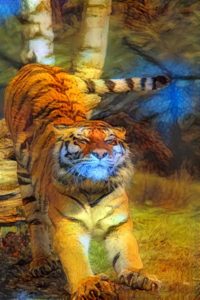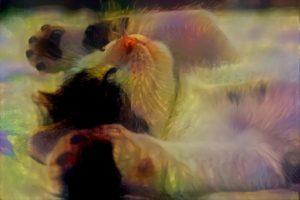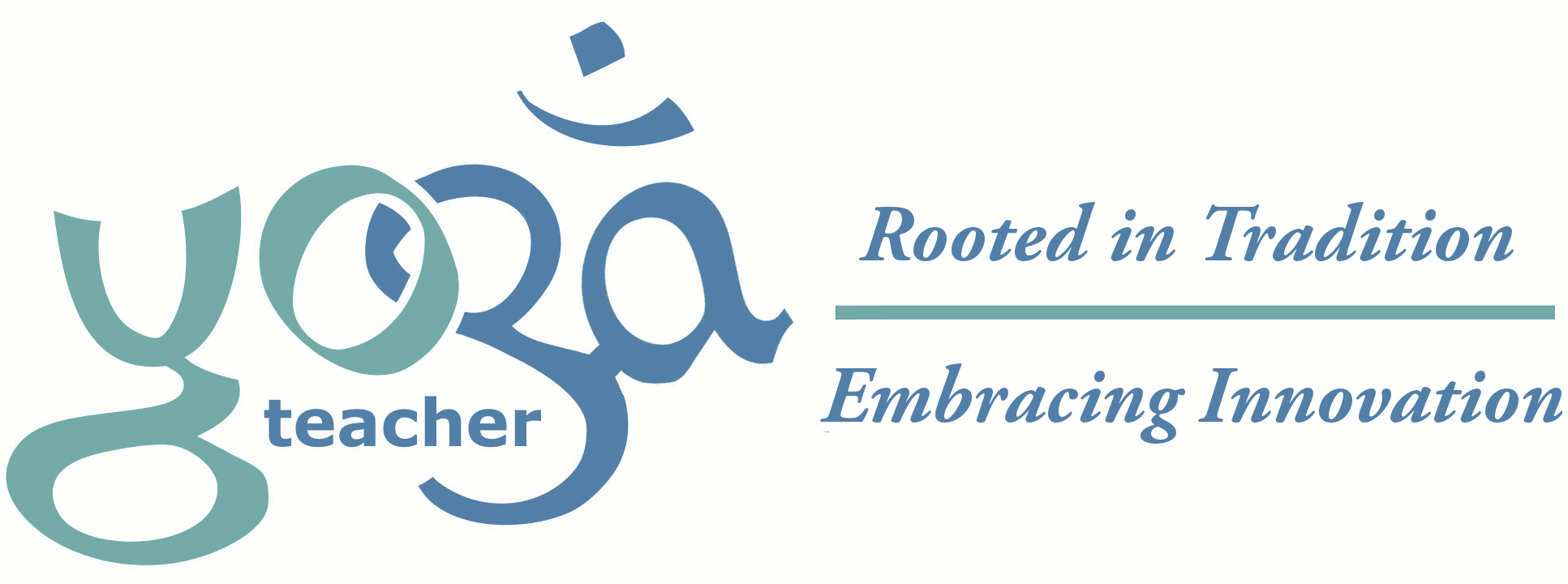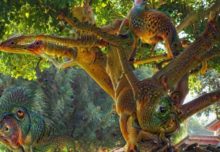 There must have been a time before yoga. It follows that the original yogis did not learn yoga from a yoga teacher. It is said that they drew inspiration from the natural world, especially from close observation of animals. The fact that they named so many poses after animals gives credence to this idea.
There must have been a time before yoga. It follows that the original yogis did not learn yoga from a yoga teacher. It is said that they drew inspiration from the natural world, especially from close observation of animals. The fact that they named so many poses after animals gives credence to this idea.
Perhaps, even now, we can see an echo of this process in a bushman of the Kalahari Desert teaching his son to observe and mimic a springbok deer’s movements, rhythms, sounds, and even personality.
The first yogis took what they learned from animals and taught it to their students who taught it to their students, until over the millennia, yoga became more and more human, and further removed from the animals that originally inspired it.
A highly developed cerebral cortex is what most distinguishes us from animals. It has given us civilization and high culture, which neither of my dogs has taken much interest in. It is also one reason that so many of us are disconnected from our bodies and unable to live in the moment. I must confess that I do not get as excited about the prospect of a walk around my neighborhood as these same two dogs.
 Even in our yoga practice we can be easily distracted, moving only from habit, minds a million miles away. A cat is capable of intense focus and can take such pleasure in the simplest of things… napping on a window sill, stretching, chasing a feather. They have an innate ability to ‘live in their own fur’. It is the absence of a dominant cerebral cortex that allows all animals to live this way.
Even in our yoga practice we can be easily distracted, moving only from habit, minds a million miles away. A cat is capable of intense focus and can take such pleasure in the simplest of things… napping on a window sill, stretching, chasing a feather. They have an innate ability to ‘live in their own fur’. It is the absence of a dominant cerebral cortex that allows all animals to live this way.
What would it be like to practice yoga without the distractions of the neo cortex? Moving intuitively and for the pleasure of movement, resting for the pleasure of resting. Watch a cat stretching and you will know! Do not try to measure the distance between the front paws, or the angle of the tail, instead pay attention to the rhythm, sound, and most importantly, imagine what the cat is feeling as it stretches. A cat does not think its way into a pose… it feels its way. Perhaps it is that simple!
In my own yoga practice, over the past 45 years, I have learned to spend less time telling the body what to do and how to do it and more time listening. I try to focus with one-pointed-attention on the subtlest present-moment sensations – body and breath. Again, and again I return to sensation. The more I do this, the less I think. The less I think, the more spontaneous, intuitive and instinctive my practice becomes. When freed from the tyranny of mind, yoga emerges from some deeper source.
Namaste’
2 Comments
-
Wonderful perspective, Charles! I am planning in seeing you at the Texas Yoga Retreat!
-
Beautifully written! It has been a long time since I have made it to one of your retreats, but I’m glad to connect when you send emails and write!






